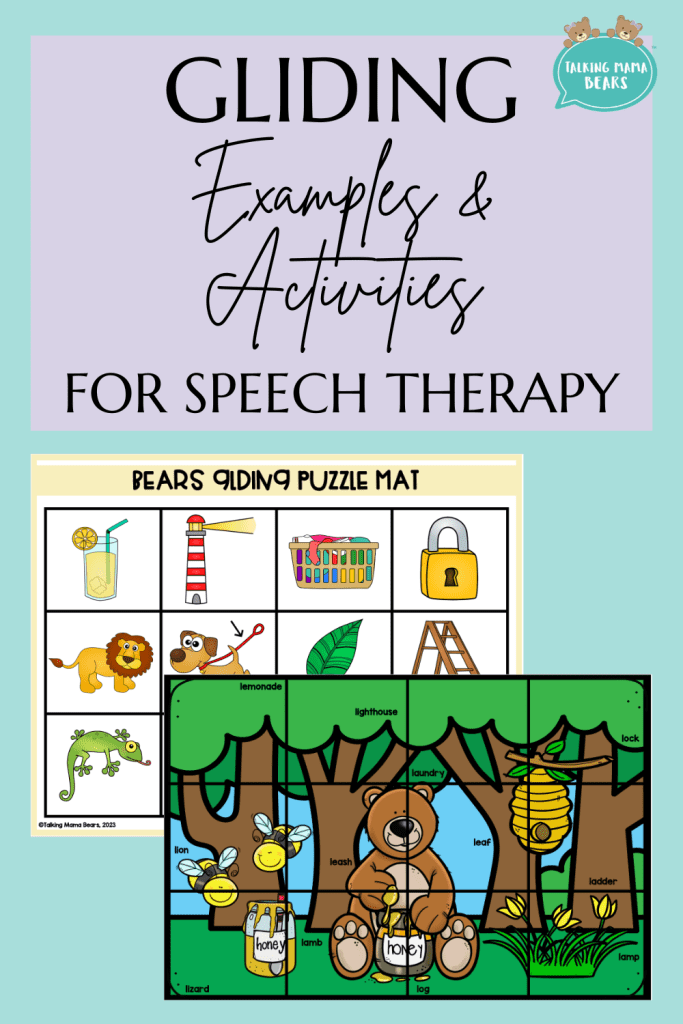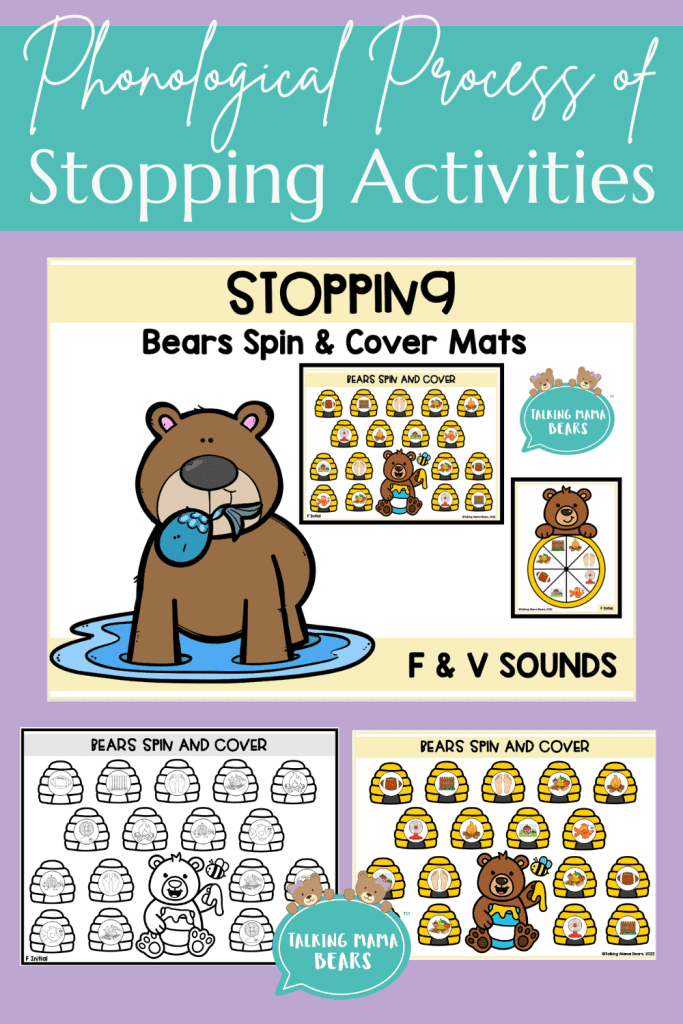This post may contain affiliate links, meaning we get a commission at no cost to you if you decide to make a purchase. As an Amazon Associate, we earn a small commission on qualifying purchases.
As speech-language pathologists we are all well versed in phonological processes disorders. However, sometimes planning engaging and effective therapy to target these errors can be difficult! We have rounded up our favorite tips, tricks, and activities for the following phonological processes: final consonant deletion, cluster reduction, velar fronting, gliding, and stopping. Be sure to check out each phonological process for a free, no prep companion activity too!

Phonological Processes Activities
Final Consonant Deletion
Final consonant deletion occurs when endings of words are left off or cut short. Children often do this as a quick shortcut during early speech and language development, but it typically resolves by the age of three. When this error persists past age three, these deletions can make overall speech intelligibility very poor. Final consonant deletion is one of the many patterns referred to as a phonological process disorder.
If you have a student who struggles with this phonological process, students awareness levels can range from completely unfazed to extremely frustrated. We have 15 different activities for final consonant deletion plus several FREEBIES to effortlessly plan your speech sessions. Therapy ideas include our favorite visuals, hands-on materials, worksheets, and play-based activities!
Click here to read more about final consonant deletion here!
Cluster Reduction
Cluster reduction occurs when children omit one or more sounds within a sound sequence. For example, a speech student may state “nack” instead of “snack”. Chances are you have had many students present with this error! Since cluster reduction can be quite common, we have rounded up some activities to target /s-blends/, /l-blends/, and /r-blends/.
We have the ultimate list of cluster reduction activities to make your speech sessions a SPECTACULAR, SMASHING, and SWEET success! Check out all of the links below to some of our favorite speech activities, books, and ideas. And be sure to GRAB our FLAWLESSLY PLEASING /l-blends/ speech sound FREEBIE too!
Click to read more about cluster reduction here!
Velar Fronting
Velar fronting occurs when sounds that are produced in the back of the throat are pushed forward to the front of the mouth. For example, the sounds /k/ and /g/ are substituted with /t/ and /d/. Children often do this as a quick shortcut during early speech and language development, but it typically resolves by the age of three and a half. When this error persists past age three, these substitutions can make overall speech intelligibility very poor. Fronting is one of the many patterns referred to as a phonological process disorder.
Do you have students that struggle with the production of /k/ or /g/ on your caseload? In need of some quick, but effective activities for the phonological process of velar fronting? If you have a student who struggles with this phonological error, students’ awareness levels can range from completely unfazed to extremely frustrated. We got you covered with examples, ideas, activities, and best of all, some fronting speech therapy FREEBIES!
Click to read more about velar fronting!
Gliding
Gliding is a phonological process typically seen in young children. Gliding occurs when the liquid sounds /l/ and /r/ are replaced with a glide such as /w/ and /y/. This error usually resolves itself by the age of six or seven, but we all know we are kept in business when it prolongs past that age!
We are almost positive you have a student (or more!) that substitutes /w/ for /r/ or /l/ on your speech caseload. Us too! This is the phonological process of gliding which most of us see very regularly. Check out a quick review of gliding, some gliding examples, and effective tips for correcting this phonological pattern. Also don’t miss the gliding freebie puzzle activity we have just for you!
Click to read about gliding here!

Stopping
The phonological process of stopping occurs when a child replaces a fricative (such as /f/ or /s/) and/or an affricate (such as /ch/ or /j/) with a stop (such as /t/ or /p/). For example, a child may say “tun” instead of “sun”. This error pattern usually develops between the ages 3-5 greatly improves overall intelligibility.
We have lots of tips and tricks for the phonological process of stopping to make your speech and language activities a “show stopper”! From cues and prompts to a freebie spin and cover stopping game, we have you covered to help your students eliminate the phonological process of stopping here.
Click to read about stopping here!
We hope you have found some new tips and tricks to add to your phonological processes toolbox. Along with the activity ideas, we hope you instantly downloaded all the freebies to help you target each phonological disorder.
Try one of our no prep phonological processes freebie activities? Let us know on social media! We would love to hear how it went!
Talking Mama Bears
Kate & Mandy



